![]()
Tue, March 29, 2011 | The Rubin Report | By Barry Rubin
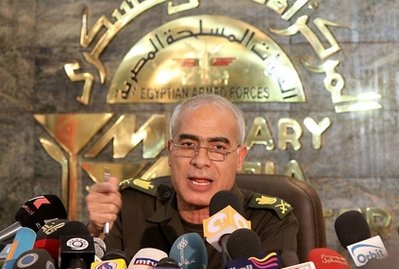
Egyptian General Mamduh Shahin, a spokesman of the transitional military government, speaks during a press conference in Cairo. (AFP/Khaled Desouki)
Who Really Made Egypt’s Revolution? The Story The Media Missed
This article is first published at PajamasMedia, March 23, 2011. The full text (with some improvements by Barry Rubin) is included here for your convenience.
The world’s eyes have been focused on Egypt’s dramatic revolution. Yet incredibly, the media, government intelligence agencies, and experts haven’t answered a simple question: Who made the revolution and what were their motives and aims?
We have been repeatedly assured that the forces that began and led the upheaval were young, liberal, pro-democratic, technically hip people. Their organizational framework was the April 6 Youth Movement.
The movement’s leadership appears to be a small group of independent people and participants with no structure. These leaders and the main activists seem to be genuinely moderate — in Egyptian political terms — and supporters of democracy.
However, whenever one can identify organized groups participating in this revolution they fall into three categories: left-wing radical Marxists or nationalists, reformists allied at the time to the Muslim Brotherhood, or Islamists. The April 6 movement itself has worked closely with the Muslim Brotherhood since it began.
The evidence for this assertion comes from simply analyzing the history of the April 6 Youth Movement. It started as a Facebook support group for a 2008 workers’ strike. By the following year, the group claimed to have a network linking 70,000 people. It is not clear who these people were but it is hard to believe that they all “joined” one at a time, as individuals with no other organizational affiliaton.
Egyptian politics and Arab politics in general are often based on linkages that make strange bedfellows in Western terms. The neo-Marxist left contains strong Islamist and nationalist elements, as well as powerful anti-Western and anti-Israel sentiments. Islamists, precisely because they want to centralize power in the state, have socialist overtones. And people who seem liberal reformers often hold views quite distant from those of Western counterparts.
At the same time, the far larger-scale involvement of leftist activists in the movement and demonstrations was ignored, while that of revolutionary Islamists was minimized or explained away as harmless.
Other than backing a labor strike, the two specific issues on which the April 6 Youth Movement was active were, understandably, support for bloggers being persecuted by the government and for ending sanctions on the Gaza Strip.
Helping Gazans is a popular cause in Egypt. Yet the political implications of that stance are revealing. The Gaza Strip is ruled by Hamas, a radical Islamist group that brutally suppresses internal dissent.
Whatever the intentions — often portrayed as humanitarian — a campaign to end Egyptian sanctions on Gaza was helping to entrench Hamas’s dictatorship and making it possible to smuggle in more arms for use in attacking Israel. It also sought to help the Muslim Brotherhood’s number-one foreign ally to become stronger.
This activity — not a domestic issue or helping the repressed people of Sudan, Syria, or Saudi Arabia, for example — was one of the movement’s two top priorities. This, too, is revealing of the participants’ politics.
Aside from well-meaning, hi-tech independents, the April 6 Movement was helped — or, if you wish, infiltrated — by four groups. Tagammu is Egypt’s leftist party with strong Marxist overtones. Three other organizations have their origins in apparently liberal groups. These are the al-Ghad party, led by former opposition presidential candidate, Ayman Nour; the Kifaya movement, and the National Association for Change led by Muhammad ElBaradei, former head of the International Atomic Energy Agency (IAEA), Nobel Peace Prize winner, and presidential candidate.
Despite its liberal origins, by the time it allied with the April 6 Movement, Kifaya was largely taken over by the Brotherhood. Its origin was in a radical nationalist and leftist movement against the U.S.-led attack on Iraq in 2003, thus in practice defending the Saddam Hussein regime. It reached its peak in 2005, though deep divisions among its Marxist, leftist, Arab nationalist, Islamist, and secular liberal members were tearing it apart. In 2006, trying to build its base through populist demagoguery — and avoid repression by the Mubarak regime — the group switched to focusing on anti-Israel agitation, including the demand to abrogate the Egypt-Israel peace treaty.
Some of Kifaya’s own members, “deep inside, are against democracy and reform,” said Bahaa al-Din Hassan, director of Cairo Center for Human Rights Studies at the time. In 2007 the group’s leader became Abdel Wahhab al-Messiri, a former Communist and Muslim Brother, as well as one of the country’s leading antisemites, purveyor of Jewish conspiracy theories based on the Protocols of the Elders of Zion.
While itself liberal reformist, ElBaradei’s National Association for Change was a small group largely dependent on the Brotherhood for organizational support and vote-getting activity.
Despite all their ideological differences — left-wing, nationalist, liberal, or Islamist — all four of the groups associated with the April 6 Youth Movement had as one of their top-priority issues the goal of ending the Egypt-Israel peace treaty.
But there is also an additional factor. Knowing that any direct association with the Brotherhood would discredit it in the eyes of many, the April 6 Youth Movement had an understanding with the Brotherhood. The two would cooperate and exchange information but the Brotherhood would not become too directly involved in the movement.
Contrary to many reports, the Brotherhood was fully informed of the April 6 Youth Movement’s plan to start an anti-government uprising last January but held back so as not to taint the campaign and to avoid repression if the struggle fizzled or failed. Once it saw that the movement was succeeding, the Brotherhood joined in fully.
In April 2009, the April 6 Youth Movement directly participated in creating the Egyptian Coalition for Change. This umbrella group also called for abrogating the treaty with Israel, thus putting the April 6 Youth Movement on the record as favoring this step. The April 6 Youth Movement’s partners in this coalition were mainly al-Wasat, the Brotherhood’s least radical faction which split away convinced that the parent group would never become moderate; Brotherhood members; and al-Karama, a left-wing socialist, anti-Western radical nationalist party.
In August 2009, the April 6 Youth Movement expressed support for the Brotherhood. It is important to understand that while the April 6 Movement was not a front for the Brotherhood, many of its activists were Islamists and leftist, while most of its members held strongly anti-Western and anti-Israel views. Moreover, the movement viewed the Muslim Brotherhood as a major partner and ally.
This is not to deny that the movement’s members called for free elections and the end of the dictatorship or that the leaders genuinely wanted democracy and human rights. Yet the best-organized elements had an interpretation of democracy rather different from the Western definition of that concept.
The idea that enemies of dictatorship are themselves radicals hostile to the West seems strange to Western observers. Similarly, the idea that people who use Facebook, favor democracy, and even seem secular are sympathetic with Islamism also appears strange. Nevertheless, such cross-overs are fairly common in the Arabic-speaking world.
Similar factors shape the views of the Egyptian military leaders, the men who made the revolution possible. It is well-known in Egypt that many of the highest officers are conservative, pious Muslims who do not perceive the Brotherhood as an enemy. A symbolic sign of these attitudes has been the increasingly “Islamic dress” of the generals’ wives. By supporting the revolution, radical nationalism, and more Islamization, the officers know they can be popular and ensure that their personal wealth and business enterprises will remain untouched.
Many of these officers and their families watch clerics like Yusuf al-Qaradawi on television and like what he says. From the standpoint of many in the military as well as many of those involved in the revolution, Islam is the answer not because of what’s been done in Tehran but as a response to their own society’s needs.
Facing what they see as unattractive Westernization, increased crime, and injustice — while doubtful about rapid material progress — officers see Islam as the answer to problems of identity, social justice, and internal stability. Thus, a far more Islamic Egypt is attractive. Those who would never want the Brotherhood to rule the state are often open to its having far more influence in running the religious establishment and society.
Similarly, there is a popular and deep-seated hatred of Israel, America, and the West. This relates not only to opposition to policies but an interpretation of those policies as far more aggressive, anti-Islam, and anti-Egypt than they are. This hostility has been unaltered by the efforts of President Barack Obama to make Muslims like America. Indeed, this has only led to a new conspiracy theory that Obama favors the Brotherhood and the Islamization of Egypt.
Certain U.S. government actions — the special invitations of Brotherhood figures to President Obama’s Cairo speech, the president’s definition of the Arab world in Islamic terms, and his unilateral statement of supporting Brotherhood participation in the next Egyptian government — have deepened that belief. This has not led to increased popularity for the president or the United States but merely convinced some influential Egyptians to jump on the Islamist bandwagon that seems — supposedly even to the Americans — destined for victory.
The reading of Egyptian politics prevalent in the West — a joyous revolution inevitably producing a stable, moderate democracy, and whose total success can only be questioned by hateful people — is profoundly misleading.
A group of 100,000 politically independent young, urban middle class Facebook users can make a revolution, at least if the army supports them. But Egyptians in the tens of millions — overwhelmingly not middle class, urban or Facebook users — will back organizations that are radical nationalist, Islamist, and far left. The moderate secular liberals, dependent on hardline forces, have now have been shoved aside in the battle for power.
The referendum on constitutional amendments demonstrated this fact. The leaders of the nationalist (Amr Moussa) and moderate democratic (Muhammad ElBaradei) blocs campaigned against the changes. Yet 77 percent of Egyptians voted the way the Muslim Brotherhood urged. That doesn’t mean they were all supporters of Islamists. Yet in this test of strength, the Islamists emerged as victors.
In addition, with the Brotherhood and ElBaradei now having a bitter quarrel — hundreds of Islamists threw stones at ElBaradei to prevent him from voting — the seemingly democratic coalition has lost most of its activist backers and voters for the presidential election.
By the end of 2011, Egypt is likely to have a radical anti-American president who was the most bitterly anti-Israel of all the Mubarak era’s establishment politicians. It is also likely to have a parliament that is about 30 percent Islamist and another 30 percent plus radical nationalist.
This parliament will write a new constitution. Facebook liberals will be of minimal importance; the 8 million Christians, about 10 percent of the population, will be ignored. The Constitution will define Egypt as a Muslim state with Islam either being the main — more likely — or perhaps the sole source of law.
Anti-American, anti-Israel, and antisemitic sentiments run far deeper and wider in Egypt than Western observers perceive. The boundaries between liberal, Islamist, radical nationalist, and extreme leftist are far more porous than is assumed. And apparently hip, Facebook users can favor a Sharia state.
All of these factors will become more obvious in the coming months. Nevertheless, the disaster for regional stability and Western interests that will exist in December should have been obvious in January.
About the author,
Barry Rubin is director of the Global Research in International Affairs (GLORIA) Center and editor of the Middle East Review of International Affairs (MERIA) Journal. His latest books are The Israel-Arab Reader (seventh edition, Viking-Penguin), the paperback edition of The Truth about Syria (Palgrave-Macmillan), and The Long War for Freedom: The Arab Struggle for Democracy in the Middle East (Wiley). The website of his blog, Rubin Reports, is at Rubinreports.



 RSS
RSS


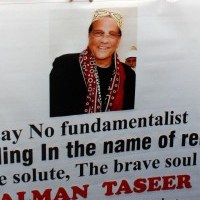
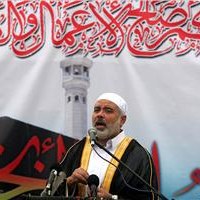
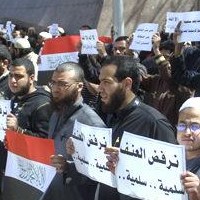
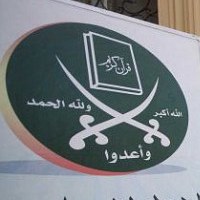
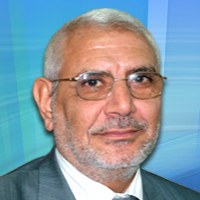




Who Really Made Egypt’s Revolution? The Story The Media Missed | #april6 #jan25 #Islamism #Egypt http://j.mp/dXd3OL
RT @CrethiPlethi: Who Really Made Egypt’s Revolution? The Story The Media Missed | #april6 #jan25 #Islamism #Egypt http://j.mp/dXd3OL
Who Really Made Egypt’s Revolution? The Story The Media Missed http://pulsene.ws/19rOj
[…] movement was arguably started by the April 6 Youth Movement. It started as a Facebook support group for a 2008 workers’ strike. By the following year, the […]
[…] the facts about the movement’s alliance with the Brotherhood and anti-American leftists was already on the public record before the […]
Who Really Made Egypt’s Revolution?
حركة 6 أبريل :تفرعت الى أربع مجموعات:
التجمع هو الحزب اليساري في مصر ذات… http://t.co/jeGACFAQ